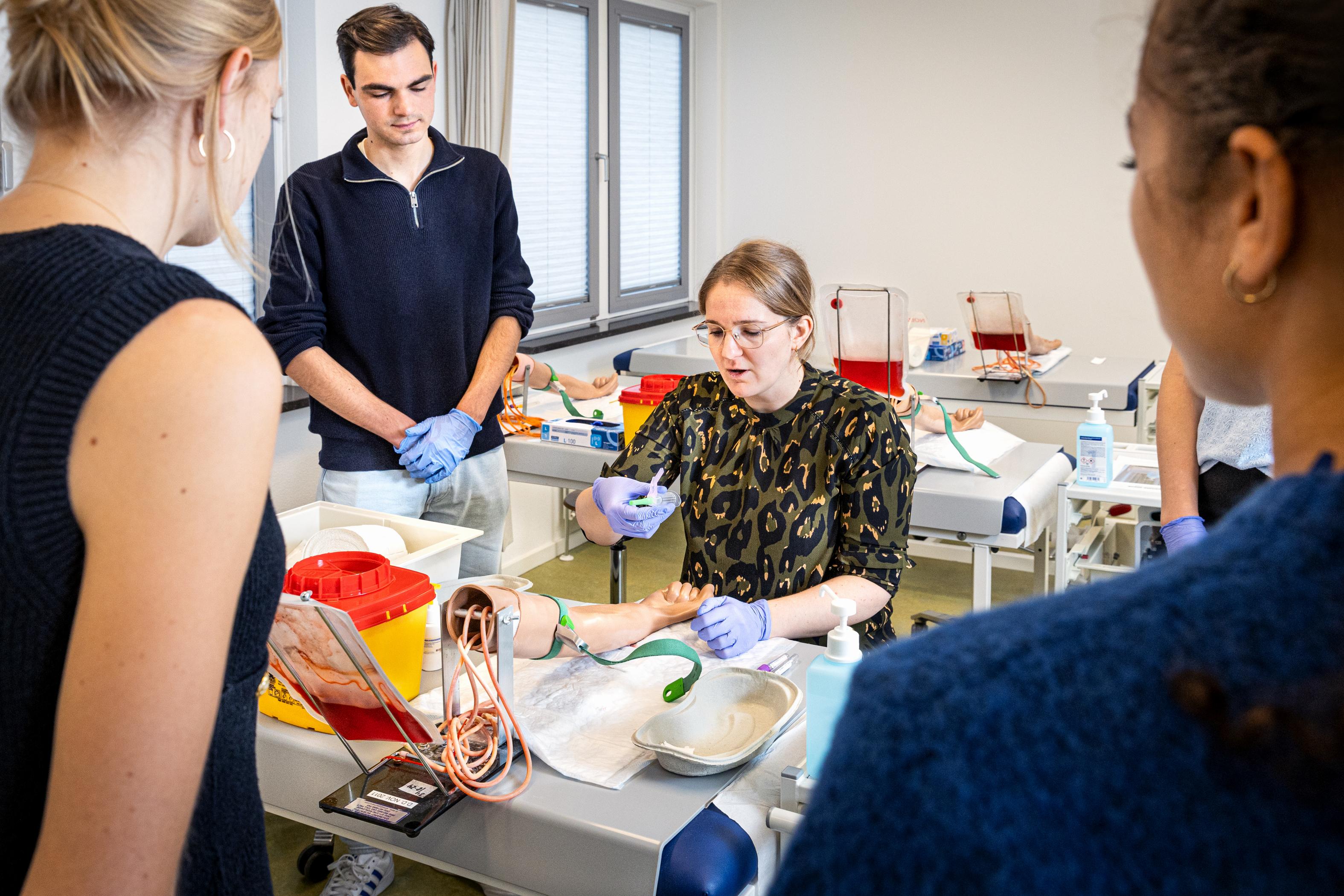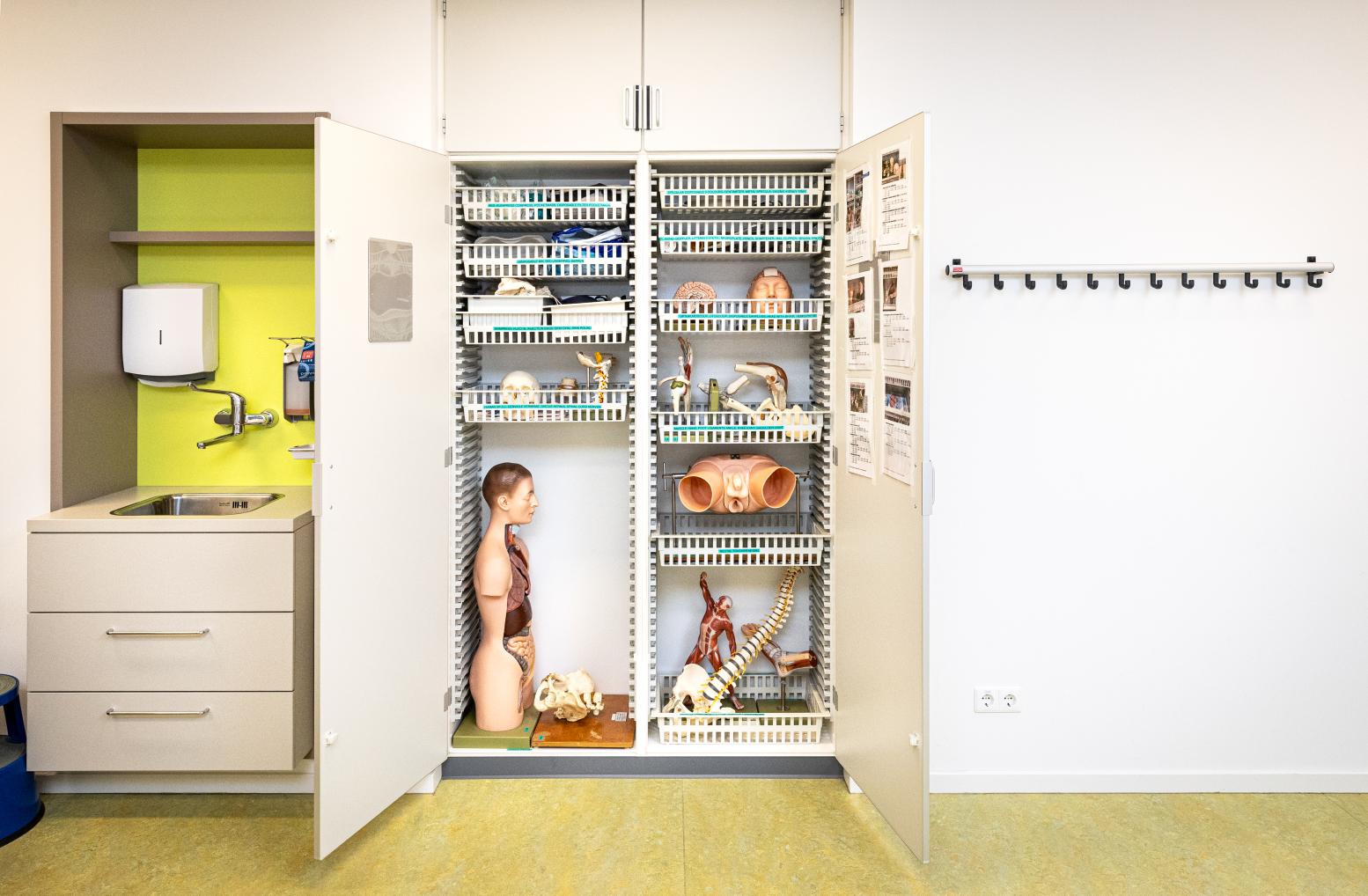
How do you learn to examine an ear without starting on a real patient? At Maastricht University’s Skillslab, medical students step into a world where theory and practice come together. This is where medical skills are not just taught, but experienced, using anatomical models, training dummies, and realistic simulated patients.
Maastricht was one of the first universities, alongside Illinois, to pioneer the concept of the skills lab in the 1970s. What began as a bold experiment in improving hands-on clinical training has since grown into a popular method for medical education, with simulation-based learning now widely adopted across the field (Bugaj & Nikendei, 2016).
Its skills training is built around five core pillars:
But the Skillslab is about more than just technique. Students are encouraged to work together, reflect on their development, and grow both personally and professionally. Whether they are measuring blood pressure or practicing an otoscopy, learning is hands-on, adaptive, and deeply engaging (Maastricht University, n.d.-e). All of this takes place in a safe, small-scale environment that mirrors real clinical settings.

Study Session at the Skillslab (Maastricht University, n.d.-a).
Inside the Skillslab, students and instructors are joined by trained volunteers who act as simulated patients. These individuals play a crucial role in creating realistic learning situations (Maastricht University, n.d.-d). The Skillslab also supports professionals already working in healthcare. At the MUMC+ Skillslab, they can follow refresher courses, take part in team-based training, or improve their clinical skills under expert supervision (Maastricht UMC+, n.d.).

A storage cabinet at the Skillslab, filled with anatomical models and training tools (Maastricht University, n.d.-a).
From communication to clinical reasoning, and from peer practice to the use of specialized models like the otoscopy training dummy, the Skillslab offers a space where medical learning becomes tangible. Here, students build confidence through repetition, guided reflection, and hands-on experience, one careful examination at a time.